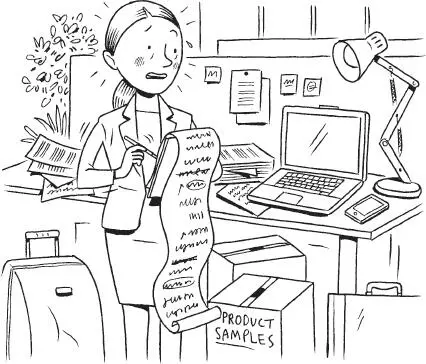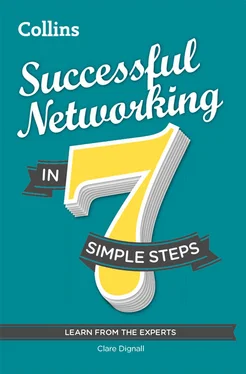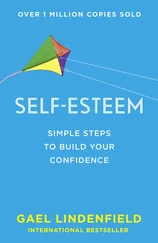So, you are mining all the value of your existing network by rediscovering the people in it and making new mutual acquaintances. Now add some new faces by breaking out of your existing network entirely. But how?
Visit your library: Your local library holds information on business and social events in your area, and many of these will be free.
Business support organizations: Organizations like Business Link in England and Business Gateway in Scotland offer free and impartial advice to people in business or starting their own. Many run free workshops so you can learn new skills and meet like-minded people at the same time.
Research online: Type in the keywords of your field of interest or business and search for upcoming events. You’ll soon find something within feasible travelling distance that suits your budget.
Night classes and courses: If you are planning to change careers or are coming back to work you may need to acquire a new set of skills. Short courses refresh your CV and your network too.
Volunteering: Want to learn new skills, meet new people and on a tight budget? Find your nearest volunteering centre and ask them about opportunities.
It’s generally believed that a person can only sustain around 150 meaningful social relationships; all those people you see on Facebook with 350+ friends don’t really have 350 lifelong buddies; they’ll have a few, the rest are acquaintances.
Ensure that your growing network has ‘balance’ too. Is it made up of both strong ties (people you can rely on) and weak ties (acquaintances who may present an opportunity in the future)? If one group dominates, then it may be time to redress the balance. Reid Hoffman, Co-Founder and Chairman of LinkedIn ®, makes a helpful analogy to explain this process of finding ‘balance’: you have one memory card for your digital camera on a six-month trip. Because the capacity is finite, you must choose whether you want to store a few great photos at hi-res, store hundreds at lo-res, or a mixture of both. So it is with your network – you cannot maintain all your relationships at ‘hi-res’, but a huge, ‘lo-res’ network will not provide you with the support you need when times are hard. You need a mixture of both: strong ties to help and guide you on your career journey, and weak ties to refresh your network, provide new information and offer opportunities.

You may not yet be convinced by the idea of networking. Many people still have a suspicion of networking, associating it with dishonesty and aggressive deal-making. For some misguided souls, that’s what networking is: only coming out of the office when you need something, working the event to get the introduction you want, or squeezing your new contact till you get the deal you want. Effective in the short term, but you’ll make no lasting relationships.
Contemporary approaches to networking turn this short-sighted tactic on its head. It’s all about building lasting relationships first, and, crucially, offering upfront value to your new contact in the hope that someday you may reap reward in return. This kind of networker (‘go-givers’ in networking terminology) will meet new people and attempt to see the world from their eyes, listening to their needs and aspirations. He or she will then consider whether they might be of help to the other person to fulfil those needs. Could they introduce someone useful? Do they have some information they could share? This ‘help’ just has to be timely, appropriate, and of value to the other. Establishing relationships on these grounds will gain you lifelong allies.
Now let’s check that we are ‘event-ready’ from an entirely practical perspective. You may have the best attitude in the world but to be a successful networker you will also have to prepare in other ways: what do you need to take with you? Do you need a business card? Do you really need to finish your website before you tell people about it? What practical preparations do we need to make to network at events effectively? In the coming pages we consider some useful practical preparations.

Get business cards printed
Although we live in a hi-tech, increasingly paperless age, it’s a surprising fact that the business card is still a must-have item in the world of networking. The act of exchanging them is a rite of passage in itself, a sort of low-level ‘trade and contract’ between you and the person you’ve just met. The reciprocal movement of exchange also provides a physical ice-breaker and puts the two of you on a level playing field.
If you are networking on behalf of your employer, it’s likely you already have a business card. If you don’t, you need to get some, for without business cards, all your networking efforts will be for naught. If you are starting your own business then ensure you have business cards printed before you start networking. You may think that’s a start-up expense you could do without, but it’s imperative to have some and they needn’t cost much – the web is full of sites printing business cards at very little cost. If you are hoping to switch careers, you may want to consider printing a personal business card, so that you can prevent a job offer being sent to a work email. What’s on your business card? Remember, you may need more information for use internationally than you need in your own country. And you may need information in the language of the country in which you plan to network.
Petersfield Projects 
Tony Fawkes M.A.Managing Director
Petersfield Projects
6 Manor Drive, Petersfield, Sussex P03 2PZ
T01377 201564
M097015 400400
Etony.fawkes@petersfieldprojects.co.uk
Wwww.petersfieldprojects.co.uk
Before you finalize your business cards, ensure that everything you say on the card holds true. There is nothing more infuriating than typing in a web address from a business card and finding that the website is a work in progress, or (much worse) cannot be found. Such a faux pas will speak undesirable volumes about your organizational skills, so before you give out business cards, literally do what a new contact would do. Get someone to ring your phone number and ensure that it comes directly to you, send a test email to the address printed (especially if it’s new), and double-check that the web address printed is operational. It’s amazing how many people get this terribly wrong – with permanent and disastrous results.
Do you have the appropriate kit?
Networking relies mostly on your ability to listen and converse. However, if you are in a particularly visual field of business, you may want to use equipment to help illustrate what you do. The key here is making the technology work for you, not against you. It’s going to be easier to talk over a tablet than waiting for a laptop to boot up (and necessitate sitting). Do you have comfortable and professional-looking means of carrying whatever equipment you need? Can you get it in and out of its bag easily without interrupting conversation? Think about the reality of bringing hardware into a networking situation with you. It has to look good, look easy and appropriate.
Читать дальше
















